Inside Digital Transformation: Learn Key Insights from CEOs and Executives at Web Summit 2019

But what makes a digital transformation successful? How to drive actual innovation instead of acting out an “innovation theatre”?
We invited top experts – seven CEOs and executives from Roche, Virgin Startup, Millennium bcp, solarisBank, Telenor Connexion, Spendesk, and LEO Innovation Lab – to find the perfect recipe for digital transformation.
Read below for the key takeaways from Netguru workshops and panel discussions at Web Summit 2019, led by Wiktor Schmidt, Executive Chairman at Netguru, and Mateusz Czajka, Head of Technology and Product Design at Netguru.
1. Be aware: innovators are seen as bacteria
From the minute the company makes its first baby steps, it begins to develop its own processes, structures, tools, and solutions. In short, it develops its own “immune system”, as Kristian Hart-Hansen, CEO at LEO Innovation Lab, put it.
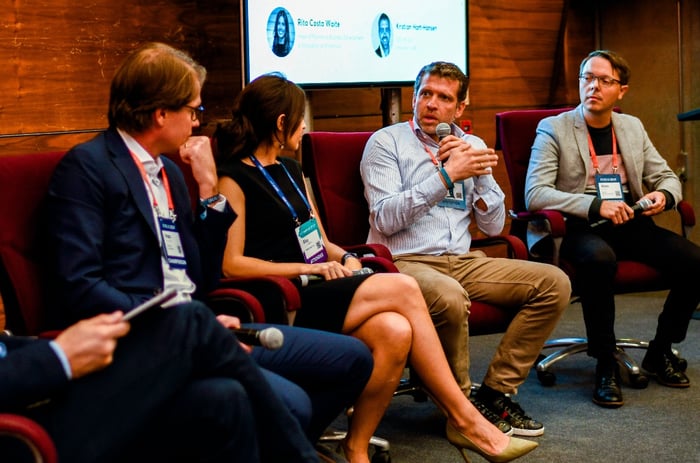
LEO Innovation Lab is a small organization focused on improving the lives of patients with chronic skin conditions. This independent unit was established by its parent company, LEO Pharma, to increase speed to market with digital solutions (e.g. using AI to improve treatment).
When you do innovation, you attempt to change habits, structures and processes at the company. That makes you’re seen as a bacteria in the organization, so the immune system cracks down on the bacteria, Kristian Hart-Hansen explained.
This kind of reaction occurs by design – the immune system (corporation) has to attack the bacteria (innovation), as it was built to protect core activities of the company. Yet, being aware of this inherent friction is important, as it allows the management team to allocate resources to different types of innovations adequately.
For instance, for incremental innovation, focused on optimizing the current processes, the team need to be close to the mothership – the change can be done internally. But if you want to do more radical innovation, say a shift in the business model, you need a different kind of talent, not stymied by the existing structures.
Setting up an independent unit, as the LEO story of successful spinoffs and medical innovations proves, can help.
Being founded outside of the Telenor mother company was also – in the words of Mats Lundquist, CEO of Telenor Connexion – one of the key factors of its success.

Telenor is one of the world's largest mobile telecommunications companies, so the mindset of being a consumer mobile company is at the heart of their culture. On the other hand, the business of Telenor Connexion is to operate on the backstage – the company led by Mats Lundquist design, implement and operate IoT solutions for other industries like automotive or industrial manufacturing.
Founding a company as a standalone unit helps set up the necessary priorities and goals, and hire and incentivize teams to do things differently. It also helps avoid being downsized as soon as the targets are not attained, giving ample time to iterate and recalibrate the business.
2. Don’t stop your digital transformation at “digital”
One of the aspects that is frequently overlooked whenever a company feels an urge to transform, is that digital transformation doesn't stop at "digital". This process consists of two aspects: “digital” and “transformation”.

- Digital transformation is not just upgrading your core infrastructure to modern, agile systems. It is changing the operational framework to drive value from this upgrade - Rita Waite, Head of Payments Business Development and Innovation at Millennium bcp, stated during the panel.
The banking industry, as any other industry dominated by large enterprises, obviously needs to upgrade the infrastructure to reap the fruits of technological progress, and to be able to integrate with new solutions.
But Rita Waite made an additional point: without changing the way the company operates, without giving the accountability to different teams and providing them with the framework to move faster, there is hardly any chance that you will do things differently.
3. Focus on customer. Customer centricity beats the technology

Today, it is all about convenience, and real time solutions. Technology is very important for us, but it is just an enabler. Customer centricity is the key, Roland Folz, CEO at solarisBank, said during the Netguru panel at Web Summit.
To become more flexible and responsive to customer needs, solarisBank made an organizational U-turn, shifting from a functional organization (with separate sales, tech, marketing, legal teams) to a matrix organization.
As Roland Folz explained, the three-year-old Berlin-based company aimed to become a product-focus-customer-centric organization. Hence five business units were established, each with a clear customer focus (e.g. a unit that is responsible for digital banking and payment cards).
The same principle was applied at Spendesk, a Paris-based spending management platform. Rodolphe Ardant, CEO & co-founder at Spendesk, felt that while the online solutions for consumer payments were simple and convenient, business spending was stuck in the 1990s.
Teams at Spendesk are empowered to ship products fast and then iterate the products based on customers’ feedback.
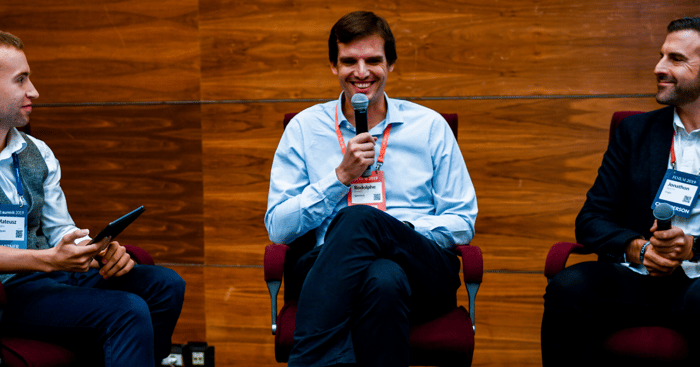
Rodolphe Ardant, CEO & co-founder at Spendesk
If you want to stay customer-centric, it’s important to have an organization that allows people to react quickly to the feedback they got from the customers or the market. It’s important to have a lot of small teams, with a lot of ownership and autonomy in terms of decision making – Rodolphe Ardant stated.
He also added that this kind of structure requires hiring the right type of employees – people that are OK with failure, and people that don’t need to be asked to do things, since they are eager to take initiative.
For now, it seems to be working for Spendesk – the company has tripled its YoY growth rates, gained over 1,500 businesses as clients, and raised €45m in funding.
4. Empower and upskill your teams, from top to bottom
The “immune system” syndrome is not exclusive to corporations, as it also extends to employees. Trying out new things, or questioning processes and structures, is not the modus operandi of most teams.
That is why Roche, one of the leading companies in pharmaceuticals and diagnostics, chose a different approach. The company introduced an innovation and agility program, which aims to empower and upskill employees, boost creativity, and move the organization towards more self-organized teams.
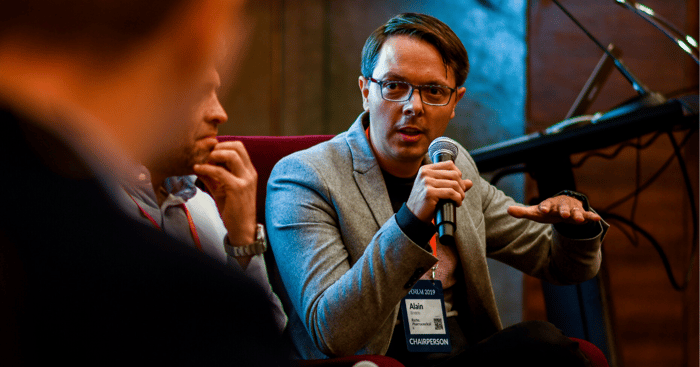
As Alain Bindels, Head of Innovation Facilitation at Roche, elaborated, the project focuses on agile ways of working, design-thinking, prototyping, co-creation with customers.
We are training our organization to let go of the past way of managing. We have been on this journey for two years now, and I see the positive impact that this is having on our organization – Bindels said.
There is one more positive side-effect of upskilling: an anxiety fadeaway. The fear amongst employees, that digitalization (AI is the frontrunner in the headlines here) would threaten their jobs, goes away.
5. Prepare for actual innovation instead of acting out an innovation theater
Those who only talk the talk fall down into a trap – they mistake “digital transformation” for a mere technological revamp. They are eager to declare change, start using new tools and processes, and engage in collaboration with startups or create them internally. Yet, the piece they are missing is a thorough and in-depth analysis of their own challenges.
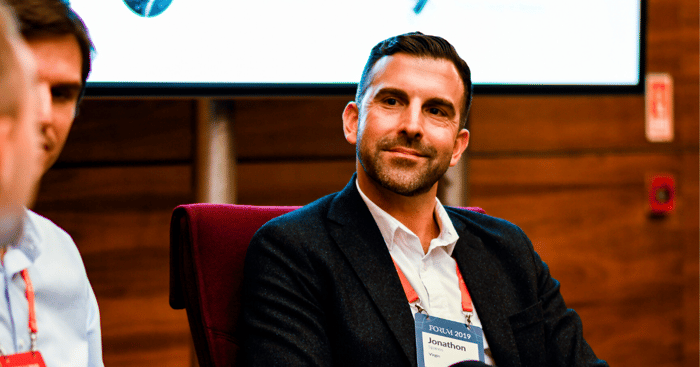
The worst mistake companies do is performing the so-called innovation theatre: trying to be innovative but forgetting about their own internal challenges. In the end, this innovation theater ends with killing those startups by the long and complex procurement lines, and with the time it takes to sign off projects - noted.
Driving digital transformation without identifying internal challenges and putting clear goals behind it will only make the matter worse – instead of solving challenges the company is facing, it will blow the existing problems up.
6. Bring startup culture in, be open, and collaborate
Technology companies (think Google, Facebook, Amazon, but also a plethora of startups such as solarisBank, Spendesk) are known for rapid prototyping, experimenting, and managing projects the agile way.
“If we want to partner with tech companies, we need to speak their language,” Alain Bindels from Roche stated.
For instance, to gain more experience, Roche set up pilot projects with startups to use Machine Learning in medical apps. They also set up an Innovation Lab to make it much easier for startups to interact with the company.
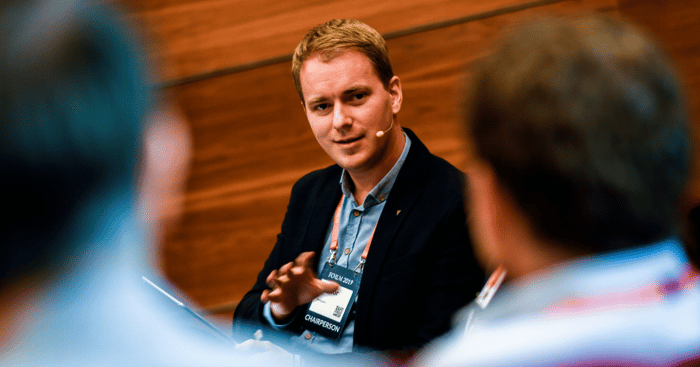
Wiktor Schmidt, Executive Chairman at Netguru
What are the other ways to scout for innovation? Enterprises have a unique opportunity and resources to pair innovation with capital.
Hence, as noted by Rita Waite from Millennium, they should collaborate with startups, in any form: be it partnership, venture investment, or acquisition. Rita Waite is also convinced that the role of corporations in the venture world is going to continue to grow, especially in the B2B space.
According to other panelists, a corporate venture arm can bring a fresh perspective to the table. Not only does it allow the company to scan the market, but it also makes them more opportunistic and helps invest in competing companies. In the words of one of our panelists, once your product or the startup wins, you still have a take in the market.
There is one risk related to corporate ventures fund though – they should not interfere too much with the startup business, as they may nip market innovation in the bud.








-1.jpg?width=384&height=202&name=Posts02%20(1)-1.jpg)











